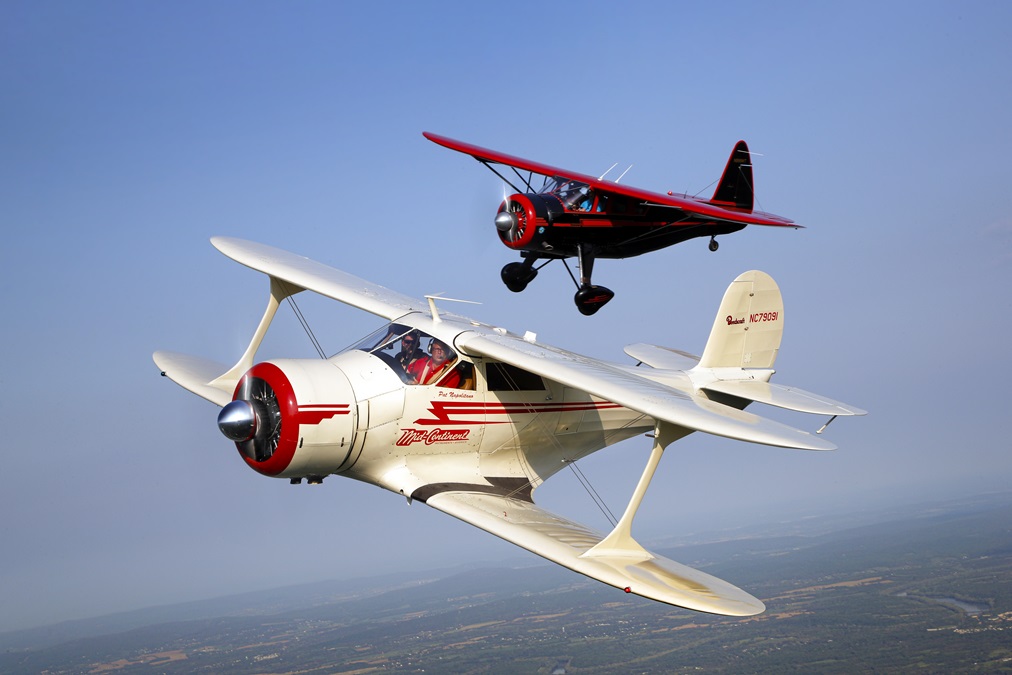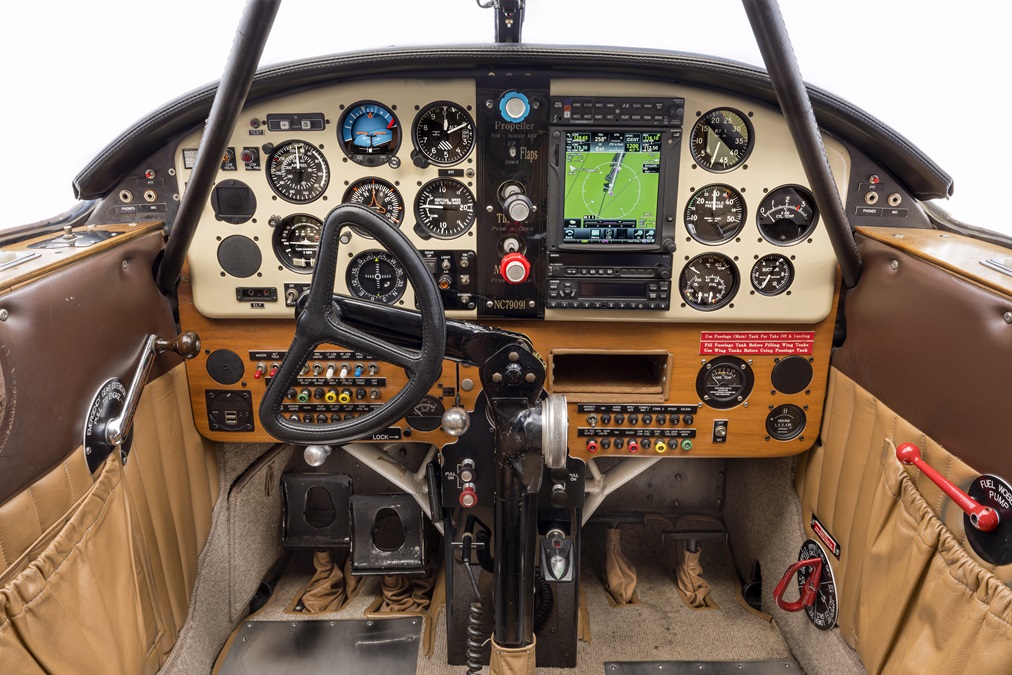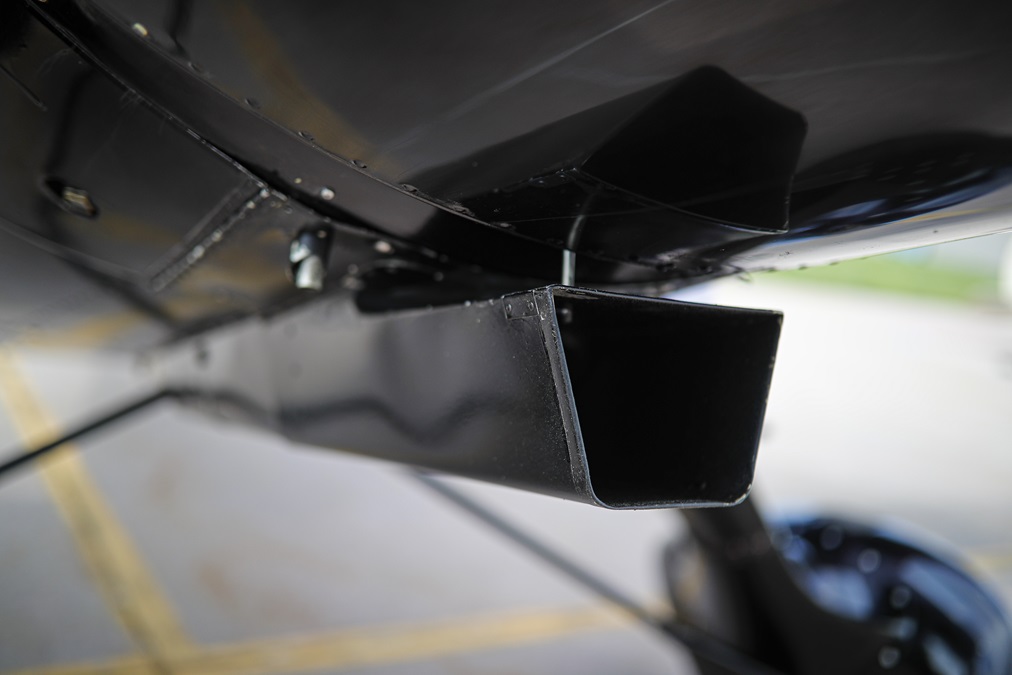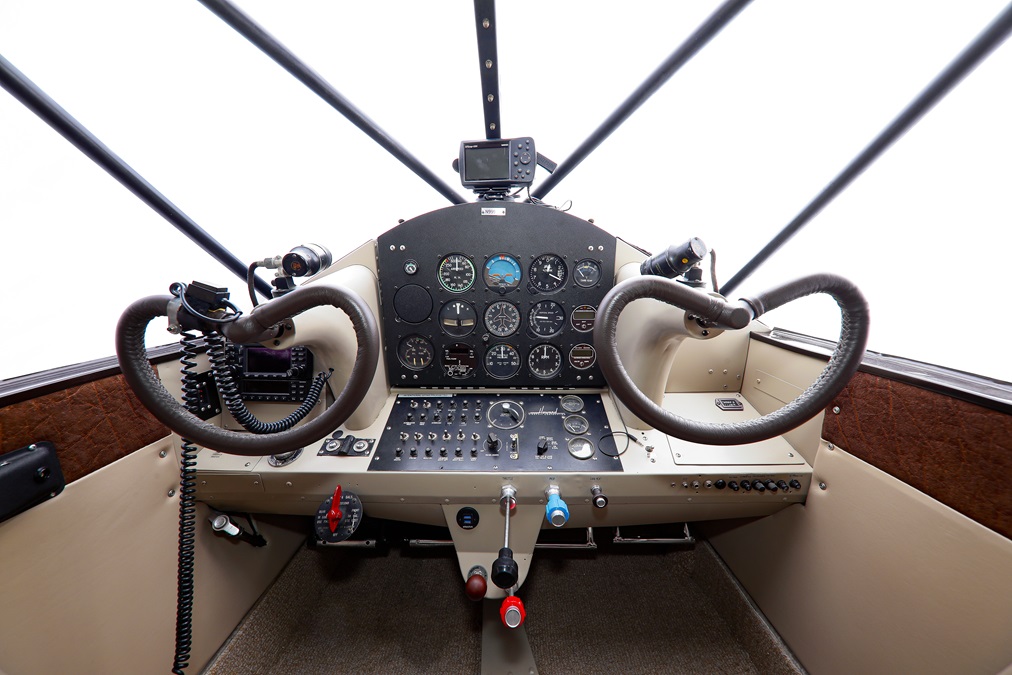Fly-off: Magnificent brutes
Beech Staggerwing versus Howard DGA–15
In the late 1930s, as aviation’s Golden Age of far-reaching aircraft experimentation and inspired development was coming to a close, the Beech D17 Staggerwing and Howard DGA–15 faced off as two of the most iconic creations of that historic era.
Both airplanes were designed and built for the emerging corporate aircraft market. They were aerial status symbols meant to provide their owners with previously unknown luxury, speed, range, style, and comfort.
Both airplanes flew about as far and as fast as the most capable airliners of their day. They used the same Pratt & Whitney Wasp Jr. engine and Hamilton-Standard prop, and they had similar retail prices of about $20,000 ($357,000 in today’s dollars)—a hefty sum during the Great Depression. Beech and Howard both claimed top speeds in excess of 200 miles per hour; useful loads of more than 1,600 pounds; plush interiors, fabric covering, and state-of-the-art instrumentation.
The Staggerwing and DGA–15 were created by outsized personalities Walter Beech and Benjamin O. “Benny” Howard—and they both traced their origins to air racing. Beech had been one of the founders of Travel Air, and he was deeply involved in the development of its pioneering Mystery Ship. Howard and co-designer Gordon Israel developed the then-unbeatable Mister Mulligan racer, which claimed top prizes for both closed-course pylon and cross-country racing in its unmatched 1935 debut (see “Good Grief,” July 2018 AOPA Pilot).
Staggerwings and DGA–15s both served as VIP transports during World War II. And they raised performance standards for the corporate airplanes that followed. Today, these airplanes are prized by restorers, collectors, and aviation connoisseurs who appreciate their pioneering places in aviation history, and the tactile connection to aviation history they bring to those lucky enough to fly in them.
Among collectors, the Staggerwing still has a mystique that neither the DGA–15, nor anything else of the art deco era, quite matches. Staggerwings can command upwards of $400,000—roughly twice as much as a top-of-the-line DGA–15.
But is this premium for the Staggerwing warranted? How do these iconic aircraft match up in a head-to-head performance contest?
The marketing departments at Beech and Howard outdid themselves with hyperbole back in the day. The Howard marketing literature claims the airplane “practically lands itself”—a particularly laughable claim. We decided to fly them side by side in a no-kidding contest at AOPA’s home base in Frederick, Maryland, to determine which airplane climbs faster, flies faster, stalls slower, and rolls quicker.
Here’s how it went down.
Scores to settle
Both airplanes carried 80 gallons of avgas (about two-thirds capacity). We mixed and matched three-person crews (pilot, co-pilot, videographer) to make them as near to equal weight as possible.
We left Frederick as a flight of three with a Beechcraft Bonanza A36 photo ship as the lead airplane. Once the Bonanza’s wheels got off the pavement, the Howard and Beech took off in intervals. Both required about 10 seconds and 1,000 feet to get off the ground, and they climbed at nearly identical rates of 1,000 feet per minute at 120 mph indicated airspeed with power set at 30 inches of manifold pressure and 2,000 rpm. There was no clear advantage as both classics showed virtually identical performance during the maximum effort climb to 6,500 feet.
Result: A tie.
Wide open
The next item was really the main event: a flat-out speed contest in level flight. But before we fully opened the throttles, Napolitano snuck in a few verbal jabs. “Hey Howard, your gear’s still down,” he quipped. “Don’t you want to pick ’em up before the race?”
Smart aleck.
The Pratt & Whitney R-985 engines in both airplanes are equipped with identical 10:1 superchargers, so the manifold pressure at full throttle was about 30 inches. Both were overhauled a few hundred flight hours earlier, so they were in the primes of their lives.
We pushed the throttles to the limit, and the airplanes stayed together for a few seconds before the Beech seemed to find another gear. It steadily moved ahead and then took a commanding lead.
“I’m indicating 155 miles an hour,” I fessed up as the Beech shrank in my windshield.
“I’m doing 160, 162, 165,” Napolitano replied giddily. “Do you still have me in sight? Let me know when you want me to slow down for you.”
Advantage: Staggerwing.
Slow flight
Next, it was time to find out which airplane could fly slower. In a clean configuration with flaps up, we slowed in unison holding a loose, line-abreast formation. The DGA’s controls started getting mushy at 70 miles an hour, and the buffet and break came at 65 accompanied by a slight wing drop. The Staggerwing kept flying.
Advantage: Staggerwing.
We repeated the slow-flight exercise with flaps down. This time, the more highly wing-loaded DGA got spongy at 65 miles an hour and stalled at 60. Once again, the Staggerwing kept flying.
Advantage: Staggerwing, again.
Roll ’em
The Staggerwing moved into trail position for the next maneuver, a roll comparison. Both pilots used full aileron deflection and coordinated rudder to roll their airplanes as briskly as possible to a 45-degree bank in one direction, then back to a 45-degree bank in the opposite direction.
The DGA has a sedate roll rate of about 35 degrees per second, and control forces are downright heavy. But the two-aileron biplane’s roll rate is noticeably slower, about 30 degrees per second.
We repeated the test to confirm our observations, but the result was the same each time.
Advantage: DGA.
Landing distance
We returned to the airport together and set up for an overhead approach to Runway 5. The wind was out of the northeast at four knots.
With full flaps, the DGA approached at 80 miles per hour, then made a tail-low wheel landing with light braking. Total runway distance was about 1,200 feet from the threshold to the stopping point.
The Staggerwing also used full flaps, approached at 75 miles an hour, and made a three-point landing. Total runway distance was 900 feet from the threshold to the stopping point.
Advantage: Staggerwing.
Magnificent brutes
In the late 1930s and early 1940s, Beech won the sales competition with Howard. Beech produced 785 D17s compared to 520 DGA–15s. Beech then went on to a prolific period in which its Model 18 Twin Beech and Bonanza dominated corporate aviation. Howard ceased aircraft production in 1944.
The DGA has some unique aspects going for it: Its racing history and connection to Mister Mulligan is almost mystical, and the airplane flies faster than its mastiff outline suggests it should. It’s even roomier inside than the Staggerwing, especially in the front seats. The relatively narrow space up front in the Staggerwing was a reminder that the people riding in back were paying the bills. And DGA pilots know that flying their airplane with smoothness and precision requires skill, a steady hand, and good (or lucky) timing on every takeoff, approach, and landing. The DGA’s high difficulty factor, to its owners and pilots, is a plus.
The DGA also isn’t as difficult to maintain. Fixed gear means avoiding the complexity of the Staggerwing’s byzantine landing gear extension and retraction system. The DGA’s fuel system has three tanks instead of the Staggerwing’s five. And the DGA fuselage is all metal, not intricate woodwork like the Staggerwing center section.
But the Staggerwing owns the intangibles.
Seeing the Staggerwing’s sleek, unmistakable form slicing through the evening sky is sublime, beautiful, and totally unforgettable. It’s an image that those fortunate enough to get to see up close will always treasure. I got to fly next to this Staggerwing twice: once in a Cessna 180 photo airplane on an evening sortie over the Pacific Ocean in Southern California, and again from the DGA cockpit during our Maryland fly-off. From those vantage points, the Staggerwing is even more striking than when you’re actually sitting in it. The airplane’s uniqueness, rarity, poise, and presence cast a spell.
In almost every category, the Staggerwing more than measures up. It’s in a league of its own—and that’s just as clear today as it was when these magnificent brutes were new.
Email [email protected]















